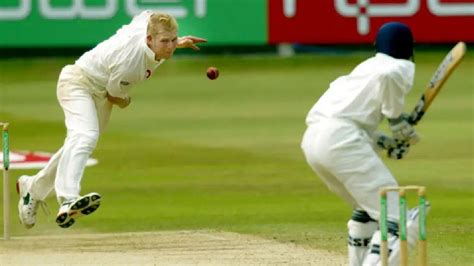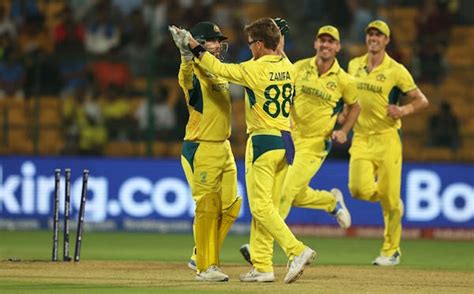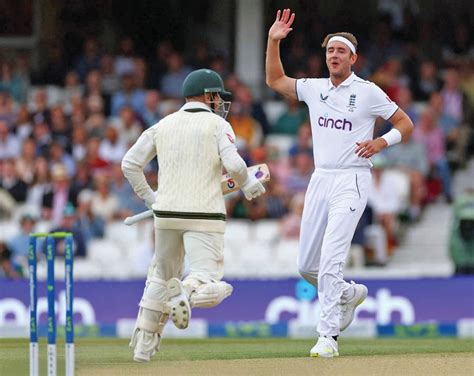Explore the physics of cricket ball movement, bowling techniques, grip mechanics, and spin analysis to enhance your bowling performance.Cricket is not just a game of skill; it’s a fascinating blend of art and science, especially when it comes to mastering bowling techniques. Understanding the intricate physics behind cricket ball movement can elevate a bowler’s performance to new heights. In this article, we delve deep into various bowling mechanisms, explore how grip and release impact trajectory, and unravel the critical role of spin in delivering those mesmerizing deliveries. From fast bowlers to spinners, each technique embodies a set of principles that govern their effectiveness on the field. Whether you’re an aspiring cricketer or a passionate fan, join us on this journey to uncover the science behind bowling and learn how to enhance your performance through technique.
Understanding The Physics Of Cricket Ball Movement
The dynamics of cricket ball movement are a fascinating interplay of physics that every bowler should understand. The essential principles of motion, aerodynamics, and friction come together to influence how a ball travels through the air and behaves upon landing. By grasping The Science behind these movements, cricketers can enhance their bowling effectiveness significantly.
When a bowler delivers the ball, several factors affect its trajectory:
| Factor | Description |
|---|---|
| Speed | The rate at which the ball is bowled can dictate its movement; faster deliveries typically result in less time for the batsman to react. |
| Seam Position | How the ball is held and released can create deviations in its path. A tilted seam can aid in inducing swing, either conventional or reverse. |
| Spin | By imparting spin, bowlers can create additional movement off the pitch and in the air, complicating the batsman’s response. |
| Atmospheric Conditions | Humidity and wind speed can alter how a ball moves through the air, thus affecting its behavior during a game. |
Understanding the principles of lift and drag is also crucial. These aerodynamic forces interact with the cricket ball based on its speed, rotation, and the angle of the seam:
- Lift: As the ball moves forward, the air pressure creates lift, allowing it to arcing trajectory.
- Drag: The friction between the ball and air exerts a resistive force, slowing it down and affecting its movement.
By mastering these concepts and effectively applying them on the field, bowlers can enhance their skills and maximize their impact on the game. With a solid understanding of The Science behind cricket ball movement, players can strategize their deliveries more effectively, addressing the challenges posed by various pitch conditions and opposing batsmen.
Types Of Bowling Techniques And Their Mechanisms
Cricket bowling is an art that combines various techniques to deceive the batsman and achieve optimal performance on the field. Understanding the different types of bowling techniques can deepen our appreciation for the The Science behind each delivery. Here are some primary bowling techniques and their unique mechanisms:
| Bowling Technique | Description | Mechanism |
|---|---|---|
| Fast Bowling | Characterized by high speed and minimal spin, fast bowlers aim to overpower batsmen. | Utilizes sheer pace and seam movement to generate bounce and carry. |
| Medium Pace Bowling | A technique that balances speed and control, ideal for accurate line and length. | Combines speed with swing and seam to create uncertainty for the batsman. |
| Spin Bowling | Includes both orthodox and unorthodox spins, focusing on turning the ball off the pitch. | Employs revolutions and wrist action to spin the ball, which may lead to unpredictable bounces. |
| Spin Variations | Different types, such as leg-spin, off-spin, and doosra, each with its approach. | Manipulates the grip and finger position to achieve different trajectories and spins. |
Each of these techniques reflects the complexity of cricket bowling and illustrates how the players use The Science of physics and mechanics to their advantage. Mastering these methods not only enhances individual performance but also contributes to the strategic depth of the game.
The Science Of Grip And Release In Bowling
In cricket, the grip and release of the ball are crucial elements that greatly influence a bowler’s effectiveness. The science behind grip and release revolves around the biomechanics of the hand and fingers, which must work in harmony to produce a specific effect on the ball’s trajectory.
When a bowler grips the ball, the pressure applied and the fingers’ positioning determine how the ball will react once it is released. Different types of bowling techniques, such as fast bowling or spin bowling, require distinct grips. For instance, a fast bowler often uses a seam grip to exploit the ball’s hard surface, while a spinner might utilize a finger grip or wrist spin to create revolutions.
Aspects of grip include:
- Finger position: The way fingers are positioned on the seam can alter the grip’s effectiveness.
- Pressure points: Identifying the right pressure for optimal ball control is essential.
- Finger rotation: Proper rotation during release helps achieve the desired spin and speed.
| Bowl Type | Grip Technique | Release Mechanism |
|---|---|---|
| Fast Bowling | Seam Grip | Straight Arm Release |
| Spin Bowling | Finger Grip / Wrist Spin | Twist and Pivot Release |
Upon release, the angle at which the ball exits the hand, alongside the rotational force applied, determines its flight pattern and the level of bounce. This interplay between grip and release exemplifies how the science of bowling directly influences gameplay, allowing bowlers to strategize against batsmen effectively.
Understanding the mechanics of grip and release helps bowlers refine their technique, leading to improved performance and greater control over the game.
Analyzing The Role Of Spin In Bowling Techniques
Spin is a critical element in cricket bowling that can significantly alter the trajectory and behavior of the ball as it moves through the air and upon bouncing on the pitch. Understanding the The Science behind spin offers bowlers the ability to deceive batsmen and control the game effectively. Here, we delve into the mechanisms and effects of spin in various bowling techniques.
Types of Spin
There are primarily two types of spin that bowlers utilize: off-spin and leg-spin. Each type employs different grips and wrist actions but serves the same purpose of creating unpredictable ball movement.
| Type of Spin | Bowler’s Grip | Effect on Ball |
|---|---|---|
| Off-Spin | Use of index and middle fingers on the seam | Balls spin from the off side to leg side after pitching |
| Leg-Spin | Use of wrist to impart spin with the back of the hand | Balls spin from the leg side to off side after pitching |
The Physics of Spin
The physics behind spin involves the Magnus effect, where the rotation of the ball creates differences in air pressure around it. When a ball is bowled with spin, air moves faster over one side than the other, causing the ball to curve in the air. This phenomenon is governed by factors such as ball speed, spin rate, and the angle of release.
Strategic Use of Spin
Bowlers can use spin strategically to unsettle batters. By varying the amount of spin and the angle at which the ball is delivered, bowlers can create unpredictable bounces and trajectories. For instance, a spinner might deliver a ball with more spin to induce an edge, causing a wicketkeeper to catch it or a fielder to intercept it.
Training for Spin Bowling
The ability to execute effective spin requires extensive practice and understanding of The Science behind bowling techniques. Bowlers often engage in specific drills to enhance their grip, wrist movement, and follow-through to achieve optimal spin. Analysis of past performances can also help identify areas for improvement.
The role of spin in bowling techniques is fundamental and intricately tied to the physics of ball movement. Mastering this aspect of bowling can lead to enhanced performance and greater success on the cricket field.
The Science Of Bowling: Enhancing Performance Through Technique
In the world of cricket, mastering the art of bowling is not just about innate talent; it heavily relies on understanding The Science behind various techniques and how they can be optimized for better performance. This aspect of the game combines physics, biomechanics, and psychological strategies to enhance the overall effectiveness of a bowler.
One key element to improving bowling performance is the adherence to correct posture and body mechanics. A bowler should focus on maintaining a balanced stance, which allows for better power generation when delivering the ball. Engaging the lower body correctly—starting from the feet through to the hips—ensures that energy is transferred efficiently up through the body during the bowling action.
Moreover, the science of rhythm and timing plays a crucial role in execution. Bowler’s timing affects their speed and accuracy, and practicing the perfect sequence of movements can lead to significant improvements. Drills focusing on rhythm can help bowlers find their optimal pace, allowing for a seamless action that feels natural and fluid.
The grip is another critical component, as it directly influences the ball’s trajectory and spin. Finding the right grip according to individual hand size and style will greatly affect how the ball reacts upon release. This requires understanding The Science behind varying grips, such as the seam grip for swing bowling or the wrist position for spin bowling.
Mental conditioning is part of the performance-enhancing techniques. Bowlers must cultivate focus, confidence, and the ability to adapt during a match. Techniques such as visualization and mindfulness can sharpen a bowler’s mental edge, allowing them to stay calm under pressure and execute their skills effectively.
Enhancing bowling performance is a multifaceted approach that integrates physical and mental training, all grounded in The Science of technique. As bowlers become more acquainted with these elements, they can significantly elevate their game and impact matches in a meaningful way.
Frequently Asked Questions
What are the primary bowling techniques used in cricket?
The primary bowling techniques in cricket include fast bowling, medium pace bowling, swing bowling, seam bowling, and spin bowling.
How does fast bowling differ from spin bowling?
Fast bowling involves delivering the ball at high speed with minimal spin, while spin bowling uses revolutions on the ball to create movement off the pitch and through the air.
What is swing bowling, and how is it achieved?
Swing bowling is a technique where the bowler makes the cricket ball deviate in the air, achieved by maintaining one side shiny and the other rough.
What role does seam position play in fast bowling?
Seam position is crucial in fast bowling as it can influence the trajectory and bounce of the ball, impacting how it interacts with the pitch.
Why is grip important in bowling?
Grip is important in bowling because it affects the release of the ball and the amount of spin or swing the bowler can generate.
What are the physiological demands of bowling in cricket?
Bowling demands high levels of strength, speed, endurance, and flexibility, requiring significant upper body strength and core stability.
How can bowlers improve their techniques?
Bowlers can improve their techniques through regular practice, video analysis, coaching feedback, and focusing on body mechanics and fitness.









